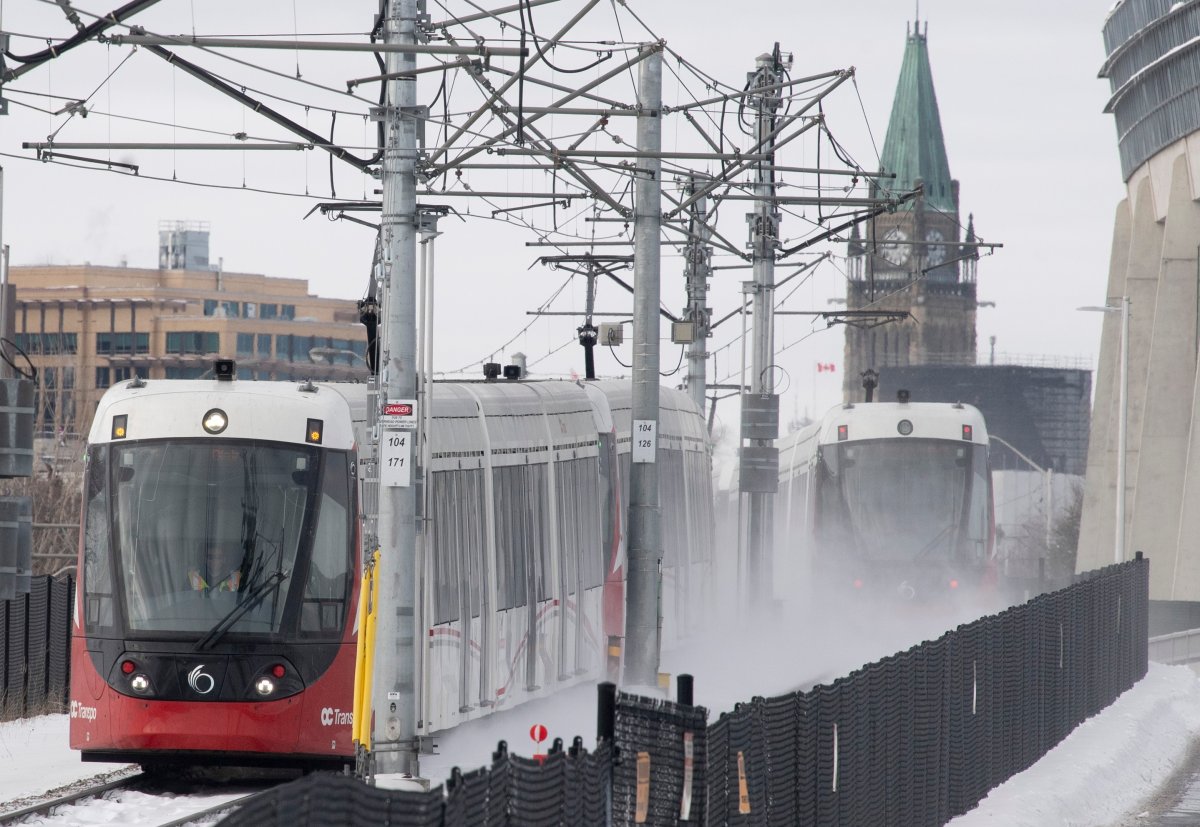Ottawa’s Confederation Line LRT will run with 11 trains, down from the usual 15, during peak service hours for the months of March and April, taking advantage of low ridership amid the coronavirus pandemic to continue fine-tuning the light-rail system.

Customers can expect wait times of five minutes between each train during the slowdown, according to OC Transpo staff.
Ottawa transit head John Manconi said during Wednesday’s transit commission meeting that the service reduction will give Rideau Transit Group (RTG), the consortium tasked with building and maintaining Ottawa’s Confederation Line, the flexibility to conduct extra maintenance work on outstanding issues such as the replacement and inspection of cracked wheels, an issue first identified on the system this past summer.
So far, 16 of a total 34 trains have had their wheels replaced or cleared, according to an update from OC Transpo staff.
Five of the seven major issues along the LRT line first identified in RTG’s rectification plan last spring have now been corrected, the transit commission heard Wednesday, with remaining work focused on fine-tuning vehicles’ brake systems and auxiliary power units.
RTG has asked for service slowdowns or shutdowns multiple times during the pandemic to expedite these repairs, but Manconi confirmed to reporters after Wednesday’s meetings that the city approached RTG in this instance.
He said the reduction is intended to “build on” the solid performance the Confederation Line has delivered in recent months and save the city some money amid lower ridership.
As a result of the drop in service, the city will withhold $100,000 from its monthly payments to RTG. The city will also save up to $60,000 on electricity costs associated with running fewer trains.

Get daily National news
The city’s agreement with the construction consortium means RTG didn’t have to budge on any reduced payments, but Manconi said he “squeezed that out of them.”
“I don’t want to hear that I’ve let RTG off the hook,” he said. “There’s no way I was going to reduce the service and not get some savings.”

But some transit commissioners didn’t feel $100,000 in savings on a system that roughly costs $4 million to run on a monthly basis was enough of a tradeoff.
Somerset Coun. Catherine McKenney said during the transit commission meeting that the city continues to give RTG a pass for its shortcomings, because it delivered a system that was not up to the standards the city ordered.
“They are reducing service, significantly, to repair something that they allowed to happen. They are under a service contract to us. And they’re going to give us back $100,000? With all due respect, as a commission, we are letting RTG off the hook once again,” McKenney said.
Manconi added after Wednesday’s meeting that the city continues to withhold “tens of millions of dollars” in payments to RTG in connection with earlier disruptions.
Though the first few months of service on the Confederation Line were plagued with issues in 2019, the second winter of light-rail transit in Ottawa has so-far fared better than the first, OC Transpo staff said.
The Confederation Line LRT has maintained an average service level of 98 per cent across 10 winter weather events with three centimetres or more of snow, staff said Wednesday. Issues with switch heaters on the track are much less common than last winter, staff noted.
“We knew that winter was going to be challenging months, and we’re seeing a high degree of performance,” said Troy Charter, Ottawa’s director of transit operations.
Some recent service disruptions have been traced to issues with train couplers, Charter said, and staff continue to track maintenance issues such as rail corrugation on the line.
The coronavirus pandemic and associated lockdowns have spurred a sharp reduction in transit ridership in Ottawa and around the world.
Pat Scrimgeour, director of transit systems and planning, said Wednesday that transit ridership in January was at 18 per cent of last year’s levels, with February figures not much higher.
And those figures are across the entire transit system; Scrimgeour said later that ridership on the LRT — normally made up of downtown office workers and university students — is likely at or below the 10 per cent mark currently.
Manconi said that with ridership so low, the reduction in the number of trains at peak service will not result in tightly packed trains.
A recent mask compliance blitz on Feb. 6 saw three people fined for refusing to wear a mask and 67 people asked to adjust their face covering, OC Transpo staff said Wednesday.









Comments